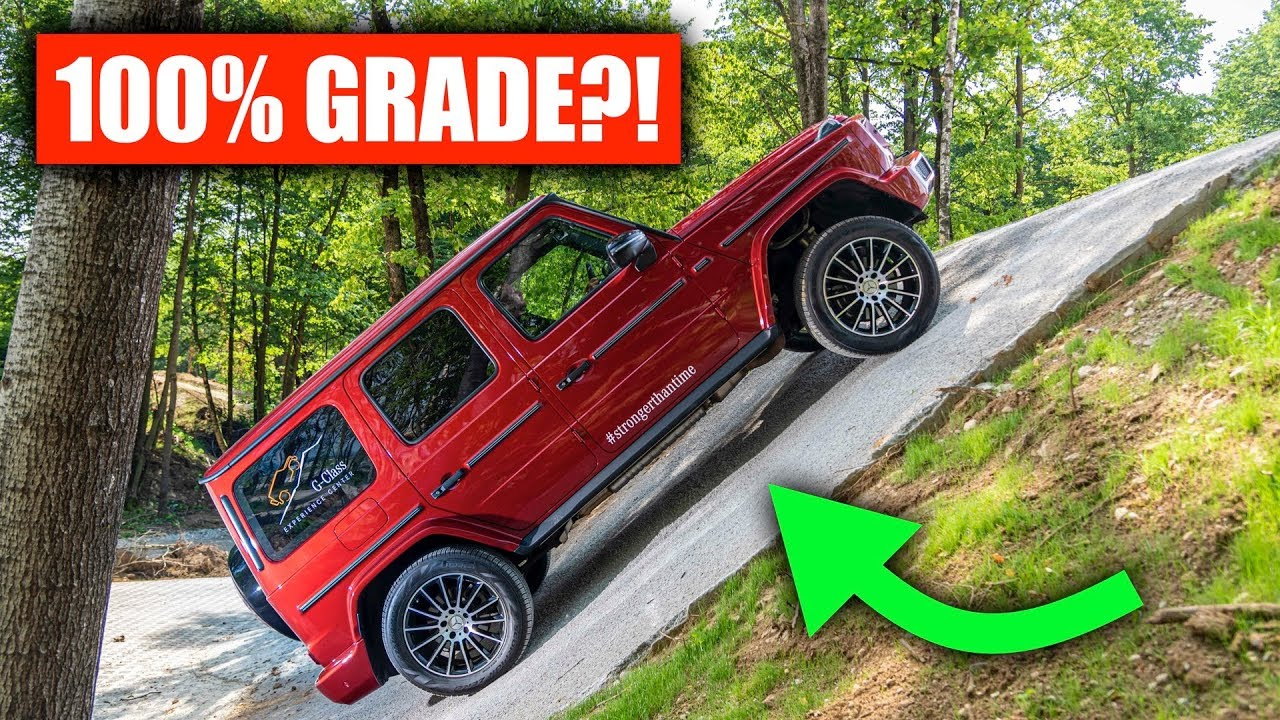
Although it seems logical that a 100-percent grade would be
a vertical surface, that’s not the case. Grade is a function of rise over run,
so a 100-percent grade is equal to going up a 45-degree slope. Not quite as
impressive as the ability to scale the side of a building, but impressive
nonetheless.
In order for a vehicle to climb a 100-percent grade, it
needs three things: power, the correct center of gravity, and the right amount
of grip.
With a twin-turbo 4.0-liter V-8 and a two-speed transfer
case, power isn’t an issue for the G-Wagen. And, despite its tall, boxy shape,
the G-Class also passed the center of gravity test—it carries its weight
between its wheels and fairly close to the ground. That just leaves the
question of grip.
In order to fill in this unknown, Fenske uses a braking test
to find the coefficient of grip of the G-Wagen’s tires. If he can get the
Mercedes SUV to stop from 60 mph in 120 feet, or from 30 mph in 30 feet, the
G-Wagen’s tires have the necessary 1G of grip to scale a 100-percent grade.
Fenske ends up getting very close, but not quite to, those
magical stopping numbers. The G-Class stopped from 60 mph in 130 feet, and from
30 mph in 32.5 feet, netting 0.925g.
Unfortunately, it was just after that braking test that
Fenske learned his data was irrelevant. The G-Wagen he tested was rolling on a
set of aftermarket off-road tires rather than the stickier Pirelli Scorpion
all-seasons that were equipped from the factory, so his calculated coefficient
of grip wasn't relevant to test the veracity of Mercedes’ 100-percent grade
claim.
However, Fenske surmises that the factory Pirelli tires
would have netted at least 1G of grip in his braking test. That assumption is
backed up by the fact that Mercedes has previously demonstrated the G-Wagen
climbing a 45-degree hill.
by Drew Johnson
http://www.boscheuropean.com
No comments:
Post a Comment